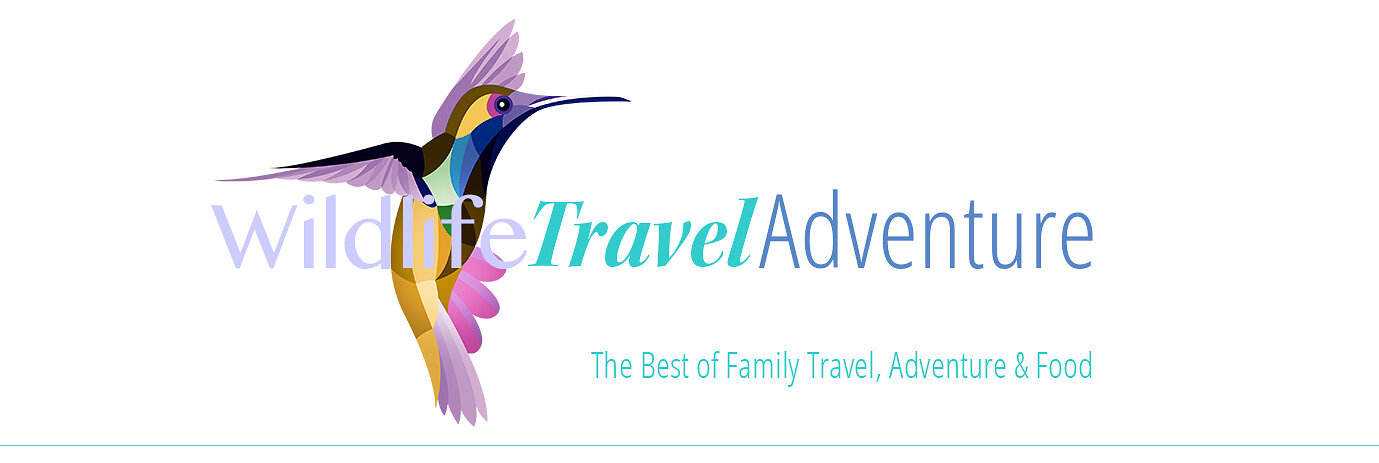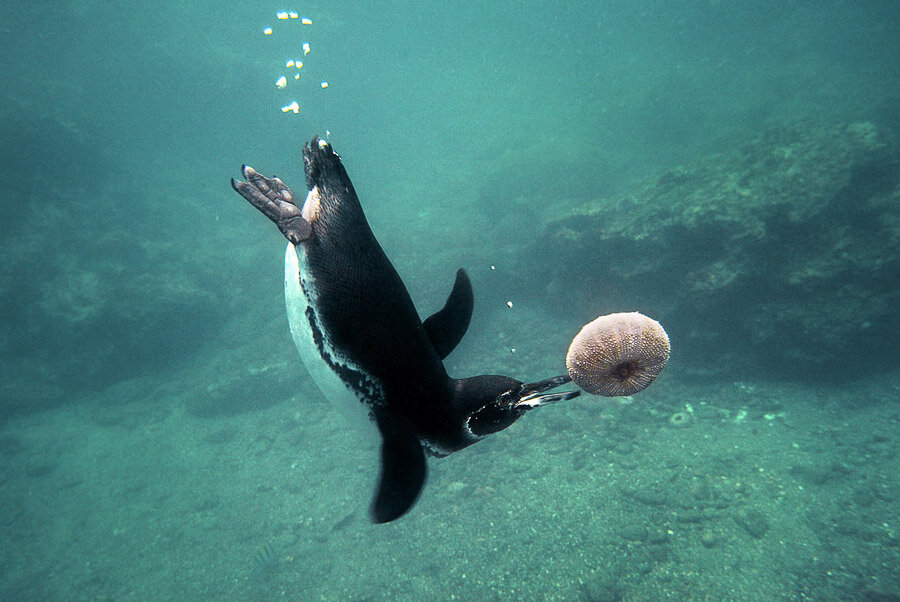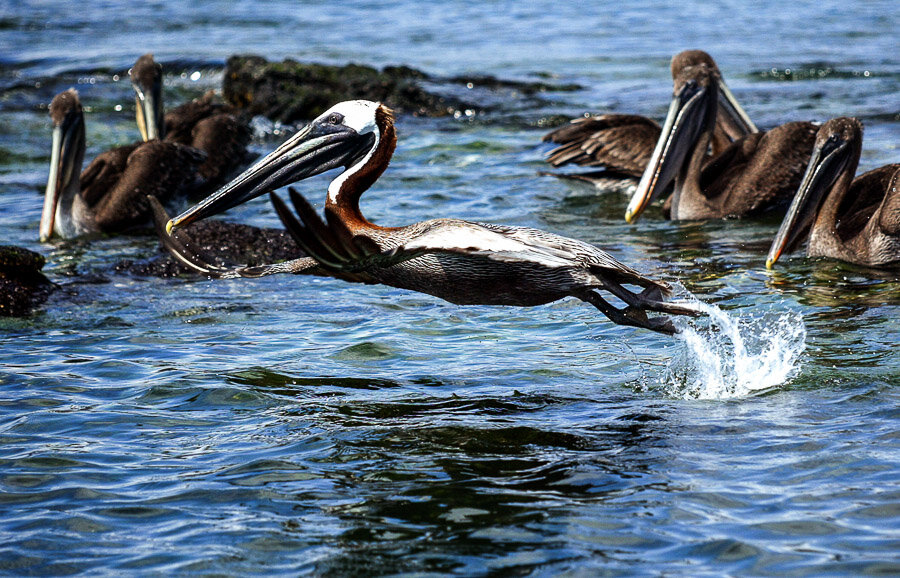Photography - in The Galapagos
How to make the most of your camera in the Galapagos. Stuart Conway, an award-winning photographer, tells Julie Conway .
Splat. A splodge of goo landed right on my lens. It had been snorted out of the nose of a Marine Iguana sitting inches from my camera. Another narrowly missed my arm. This dragon-like creature wasn't telling me to get out of his space; he was expelling salt water taken in while feeding.
The Galapagos is one of the few places in the world where you can get close to wild animals without endangering yourself or them. But even there it's possible to take pictures that turn out disappointingly. One of the commonest reasons is a failure to get really close, either by moving in yourself (check first with the guide) or making the most of long lenses.
The marine iguana didn't object to my being three inches from its face. Despite its gruff appearance, it is a peaceful creature, so I lay next to it for a few moments, then started shooting. I tried to get my eyes level with an animal's eyes as much as possible, and that's how I got some of my best shots.
We signed on with M/Y Flamingo, a 20-passenger motorised yacht that has one of the best itineraries in the area, covering more than 600 nautical miles in a week and visiting some of the more remote islands.
On our first day we anchored inside the crater rim of Isla Genovesa. Blue-footed boobies torpedoed in formation into the sea from 60ft high and pelicans swooped down to gulp gallons of fish-filled water, oblivious to the noddy terns that sat on their heads hoping to steal some of the catch.
In such circumstances it's hard not to get overwhelmed and start snapping at everything that moves. If you see something extraordinary, you should certainly shoot it straight away, and not worry about taking too many shots. Otherwise, look at as many different angles as possible.
Listen closely to your guide, too. Ours, Harry Jimenez, rivalled David Attenborough in his knowledge of animal behaviour. Anticipating what a creature will do next is the best preparation for a great shot.
There aren't many places in the world where you can snorkel with sea lions and penguins. It's worth investing in an underwater camera bag or, at the very least, a disposable underwater camera.
For my Canon , I found a great underwater bag for £180 made by Ewa-marine (which makes bags from about £50 for smaller cameras). As I prepared to go over the side of the boat, I had second thoughts about submerging my precious camera in the bag. Then a sea lion popped up next to me to see what was in my hand. I followed him underwater while he played with a feather. Sea lions are curious; they love to swim around you, curling their bodies into beautiful shapes that make good photos.
Try to shoot when the sea lions are near the surface because the light will be much better, and keep your shutter speed high - they move quickly.
The Galapagos is the most northerly place in the world where penguins can be found, and the only place you can swim with them without having to worry about you and your equipment freezing up.
During our first 10 minutes in the waters off Bartolome, a single penguin sat on a rock, showing little interest in going into the water until a group bulleted past so fast it was impossible to shoot them.
Just as it was time to go, I spotted a mating pair. Many good wildlife shots are luck, but you have to spot the potential in a situation. If you see something like this, don't leave and think you'll get it tomorrow. Do what it takes to buy yourself a bit of extra time. I was lucky: our group didn't mind waiting an extra 10 minutes. I could quite happily have stayed for weeks shooting in some places we visited.
The male penguin brought the female a sea urchin to play with. He dropped it and chased after it. That was the shot. It's a shape and it conveys how playful the penguins are.
Try to catch the animals when they are moving to get something different from the postcard images - frigate birds in flight, boobies sweeping back their wings just before plunging into the water, pelicans taking off, iguanas swimming.
At Punta Espinosa on Isla Fernandina, there was so much to photograph that it was hard to know where to start. Hundreds of marine iguanas sunned themselves while lava lizards and brilliant red Sally Lightfoot crabs climbed over the rocks.
One of the best shots I took that day was of a male Flightless Cormorant returning to his nest bearing a sea urchin covered in green seaweed for his mate (see above). A tight shot of their heads, using a 100-400mm at 400mm, worked best.
Many people were disappointed that they didn't bring a long lens. The animals are close, but to get a bold portrait you need the extra focal length. With a shorter lens, it would have been impossible to see the urchin.
On our last day we saw a sea lion being born. A tiny face emerged, nuzzling up to the mother, which licked it clean. Then, squinting in the bright light, the infant opened its eyes. It was the perfect end to an extraordinary experience.
Galapagos Network (001 305 262 6264, www.ecoventura. com). Their blog is here. | StuartConway
Pointers:
The most important thing in wildlife photography is to respect your subjects.
Try to avoid eye contact, which to many animals constitutes a threat.
Train your eye to spot when an interesting moment is likely to occur.
Aim to show significant behaviour - how an animal looks when it's reacting to another species, for example.
Don't spend all your time and energy on one perfect shot. Vary viewpoint, framing etc as much as you can.
Experiment with the lighting; Don't be afraid to shoot in to the light, it can help to create atmosphere.
It's worth investing in a SLR kit, but you can get great shots with any camera if you are in the right position.
Take double the amount of cards & disk space you think you'll need.
Take an underwater bag if you want to take pictures while swimming with sea lions or penguins. For Ewa-marine bags, see This link on Amazon









